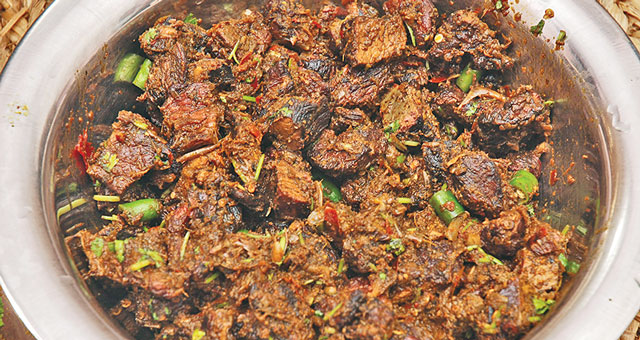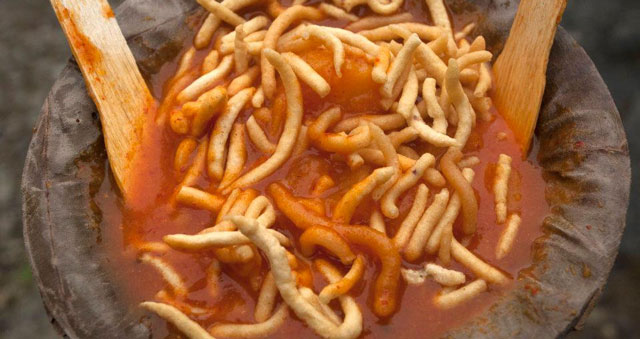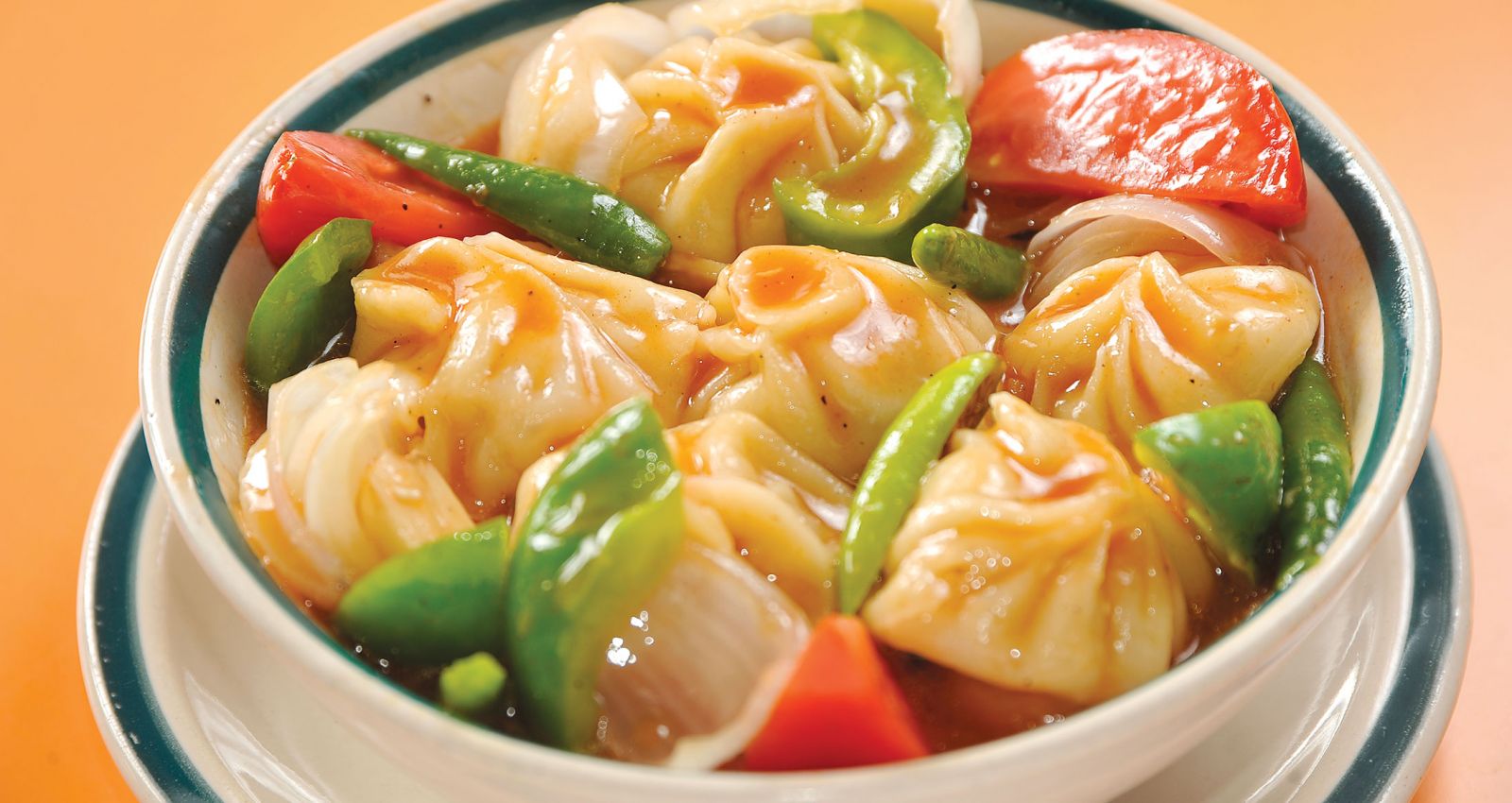Whether we eat to live, or live to eat, the real question is whether food is only that which sustains us, or is it something much more?

We eat.
From the moment of creation of life on earth—or anywhere else in the universe—the first action accomplished by the living entity must have been the act of eating. Be that the moist air and starlight around it, or a potent chemical in the slime in which the being swam, without ingestion it must have been impossible to effect the next action that could sustain life, or allow procreation. Ever since, we have been eating. We are as much stardust as we are the primal act of ingestion. We are made of one kind of stuff, but we can become only after one kind of action: metabolism.

And now, we diet and feast, suckle and sup. Sometimes, we eat alone, and sometimes we eat in a crowd. We make a great fuss of what we eat and how we eat: some of the most elaborate religious and social mores are about the acts of gathering, preparing, and consuming food. We die mostly because of what we eat. The OED makes a poetic turn: food is “to supply the waste of tissue”. Food gives, and food consumes. We die because we eat.

We also think.
We think of sustenance, and from where it comes to us. From there arise rituals, as arise thereafter the hierarchies. Our basic worry about who we are translates into food habits. What we eat or reject ends up becoming a greater signifier of our worth as a people. What we don’t eat defines us just as much as what we eat shapes us: how we eat is a commentary on who we are, and who we want to become. Guests and unwelcome strangers are separated by our triangular relationship with them and the food we share. In some parts of the world is the notion of caste, and in other parts the notion of class is more dominant; but in most parts, the predominant idea still hinges around who we find worthy or otherwise of sharing food with us, breaking bread in civilized company. A great part of our spiritual and social concern in life revolves around the thoughtful arrangement of food around ourselves, and in drawing strands between us, our shared food, and the individuals in our life for whom we reserve love and warmth. When a good friend steals the last momo from our plate, we pretend to be angry. But, when someone who isn’t in the best of our graces tries to do the same, even as a joke, it rankles, and we become angry.
Babies love sweet, the young seek the spicy and sour, and the old have only the salt of life. Food changes with us just as much as we change with food. Here, I invite you on a journey through my years, to remember certain tastes and moods, my friends, and the corresponding memory I have of food.

The earliest memory I have of food is that of a wedge of melon; not the red kharbuja, but the white tarbuja. I had found the melon growing in a corner of our yard and had asked my mother to cut it for me. It tasted both like water and like milk. Even now, when I think of my mother, I remember the wedge of melon.
 As a young child I wasn’t allowed to eat outside the house. Feasts were rare, as was meat. That is why I became gravitated to blood very early in life. Now, looking back, I understand why the mothers and aunts and grandmothers were so excited about days of pujas: on those days, a bird or an animal was sacrificed, and those of us who weren’t allowed to eat outside the home finally got to eat meat. My mother would save some meat even from her meager portion and share it with her friends. For my brothers and uncles, there was better fare outside: buffalo and hog meat on the sly, birds brought down by their catapults, samosas from vendors. If I was lucky, I would be treated to a jalebi or a cold popsicle from a traveling vendor. Sometimes, when married aunts visited once a year, there would be a small basket of koseli— selroti, sweet potatoes, oranges. These were the exotic then, in my rural childhood.
As a young child I wasn’t allowed to eat outside the house. Feasts were rare, as was meat. That is why I became gravitated to blood very early in life. Now, looking back, I understand why the mothers and aunts and grandmothers were so excited about days of pujas: on those days, a bird or an animal was sacrificed, and those of us who weren’t allowed to eat outside the home finally got to eat meat. My mother would save some meat even from her meager portion and share it with her friends. For my brothers and uncles, there was better fare outside: buffalo and hog meat on the sly, birds brought down by their catapults, samosas from vendors. If I was lucky, I would be treated to a jalebi or a cold popsicle from a traveling vendor. Sometimes, when married aunts visited once a year, there would be a small basket of koseli— selroti, sweet potatoes, oranges. These were the exotic then, in my rural childhood.
My elder sister was an enterprising young woman: she would run off to the jungle between classes and bring back amala and imli and jamun, which she sold to her classmates. With the money she made, she would buy titaura and paaun. We would walk home with fiery red tongues. The tart and hot titaura was the first taste that bound me to my close circle of friends. Wedges of cucumber slathered with ground chili, and as counter-point, wedges of freshly cracked coconut, were the forbidden taste. The non-nutritional and non-essential foods were the first seeds of friendship and community outside the family.
 Nepal was rapidly changing its feasting habits as I was beginning to be aware of food as being more than merely meals. One transition that sticks to memory is the change from bhater to bhoj at village weddings. Earlier, we all sat on straw mats arranged in a field, and waited with stitched-leaf platters. Somebody brought the rice, followed by someone else with the daal, the pickled and the cold achar, and, finally, the thin broth of goat meat, salty and piquant. We ate, hurrying to shovel the rice in before the broth trickled out from the platter and into the field. But, down the years, bhaters became bihe-bhoj, and suddenly the village saw pulau! Long grains of rice drenched in vegetable shortening, fragrant with bay leaves and cinnamon and cloves, richened with cashew and sultanas. To go with it, there was the inevitable and unenviable curry of potatoes and cauliflower. Tomato achar thaw was cooked. Earlier, the meat of the animal was quartered and served according to the station of the guests: the brain and testicles of the goats for the elders, bones and skin for the poor. Now, everybody lined up for their food, and was served the same feast. Men and women ate the same food! Children also ate the same! How charming an idea!
Nepal was rapidly changing its feasting habits as I was beginning to be aware of food as being more than merely meals. One transition that sticks to memory is the change from bhater to bhoj at village weddings. Earlier, we all sat on straw mats arranged in a field, and waited with stitched-leaf platters. Somebody brought the rice, followed by someone else with the daal, the pickled and the cold achar, and, finally, the thin broth of goat meat, salty and piquant. We ate, hurrying to shovel the rice in before the broth trickled out from the platter and into the field. But, down the years, bhaters became bihe-bhoj, and suddenly the village saw pulau! Long grains of rice drenched in vegetable shortening, fragrant with bay leaves and cinnamon and cloves, richened with cashew and sultanas. To go with it, there was the inevitable and unenviable curry of potatoes and cauliflower. Tomato achar thaw was cooked. Earlier, the meat of the animal was quartered and served according to the station of the guests: the brain and testicles of the goats for the elders, bones and skin for the poor. Now, everybody lined up for their food, and was served the same feast. Men and women ate the same food! Children also ate the same! How charming an idea!

In my teenage years I discovered the joy of being a girl with her friends, sitting in a dark corner in a restaurant in the city, chatting to her friends while waiting for momos. Growing up in a city in Nepal has everything to do with the group of friends sitting around a table with plates of momos: that is where we tested the limits of our known world, and that is where we learned to raise our voices in public. Ask me now to recall a way home in the evenings after tuition lessons or school, and I can punctuate the length of the road home with the hiss and mouthwatering aroma of one momo joint after another. Overwhelmingly, the teenage years for me are of momos, shared with friends, tucked into on my own, fought over with greasy spoons and loud laughs. More than all other kinds of food I discovered outside my home, it is the momos that remain, as if caught between teeth and tongue, still capable of transporting me to the company of those awkward, pimple-pocked faces of fast friends and first loves. Momos were the first force of equalization: boys from my class picked from my plate, and I picked from theirs. Close friends bit a momo in half and shared, getting over barriers of caste and class and gender, and liberating themselves from the strictures set upon them by their heritage.

And, thus, a morsel can become the road away from the old and towards the new. The many limits that society had set around me fell away as I tried one forbidden thing after another: buffalo meat in momos, then pork in momos, and then, a step up, an exquisite slice of pepperoni with pork and beef in it. But it was also where the foods were consumed that charted a path away from the old. Whenever I visited my Newar friends, it always resulted in a bemused patronization by their parents: you are the daughter of a Bahun, do your parents know you are eating buffalo meat? Or, going to Thamel and pooling together the money a few of us had, so that we could squeeze onto a bench in a Muslim restaurant to taste north Indian style slow-cooked buffalo, or, at the most adventurous, a steak at a steakhouse. As the bonds of friendship were cemented further by the illicit food we ate together, the road away from home was also being drawn.
 Then, I had to grow up, go away before I could return to the familiar. Just before I left home to go abroad to study, I began feeling an intense nostalgia for something that was still with me: my mother’s cooking. The tug was more powerful that I could ever have imagined. Food was the thread that kept separation at bay. I craved a variety of curries from our life in the village: yam, taro root with a big squeeze of lemon, slimy okra with a squeeze of lime, black-eyed peas cooked in the leftover fat of a goat curry, jackfruit. Papayas and plantain curried with a bit of yogurt. Pigeon, with a very thin broth. Black daal, with milk to mix into the rice. Mustard leaves and bitter ferns. Snake-gourd prepared in ghee. These were tastes from a culture of agrarian foraging. Some beans and gourds came from the kitchen garden, but often times, the more interesting flavors came from foraging around the fields or in the jungle when Mother went there to collect fodder or firewood. In the city I was craving the flavors of my childhood, because I knew I was irrevocably moving away from it. And, I also knew, that leaving behind the taste of Mother’s cooking was the necessary first step in spreading the wings, so to speak, before flying off to my own new horizons.
Then, I had to grow up, go away before I could return to the familiar. Just before I left home to go abroad to study, I began feeling an intense nostalgia for something that was still with me: my mother’s cooking. The tug was more powerful that I could ever have imagined. Food was the thread that kept separation at bay. I craved a variety of curries from our life in the village: yam, taro root with a big squeeze of lemon, slimy okra with a squeeze of lime, black-eyed peas cooked in the leftover fat of a goat curry, jackfruit. Papayas and plantain curried with a bit of yogurt. Pigeon, with a very thin broth. Black daal, with milk to mix into the rice. Mustard leaves and bitter ferns. Snake-gourd prepared in ghee. These were tastes from a culture of agrarian foraging. Some beans and gourds came from the kitchen garden, but often times, the more interesting flavors came from foraging around the fields or in the jungle when Mother went there to collect fodder or firewood. In the city I was craving the flavors of my childhood, because I knew I was irrevocably moving away from it. And, I also knew, that leaving behind the taste of Mother’s cooking was the necessary first step in spreading the wings, so to speak, before flying off to my own new horizons.

Food became either purely nutritional or intensely celebratory through the years in college. Nobody really knew how to cook, but everybody had an intense and insatiable hunger. Everybody, everything, every place was frighteningly new, and food was a means to tide over the minutes of anxiety that would otherwise debilitate everybody. So we gathered, Nepalis and non-Nepalis, men and women, under the pretext of cooking. Everybody tried to replicate the tastes of the kitchens they had left behind, and everybody failed: the nostalgia thus always remained strong in the absence of the perfect mix of spices or, say, timur! Each time the aalu ko achaar failed to answer to the craving for the place of our roots, we also earned the opportunity to promise something better the next time, at another party. And with the regret of the perfect and unattainable feast behind us, we settled into corners and found our first taste of a merlot or a pungent spliff, or, for the lucky, the first, perfect kiss.
 Every kiss is an act of eating.
Every kiss is an act of eating.

And so it goes, the road shown to us by food: it brings us into existence, and it also rusts and blocks the machine enough that it eventually kills us. It is mother’s milk, and it is also the soup ladled into toothless and ancient mouths. It is there when we are named, when we establish a direct relationship with the world around us by tasting its grains and greens. It is there when we first realize that death comes to living beings, and that some such freshly dead beings make excellent food. It is there when we realize that the society into which we are born requires us to decide what may be eaten and what is forbidden to us: pets, fellow humans, flowers in the neighbor’s garden. It is there again when we find our wings and travel ever outward, ever onward, towards our true selves. It is in the severing of the bonds of family that we are born into, and again, as if by magic, again when we form new bonds of new families and communities.








